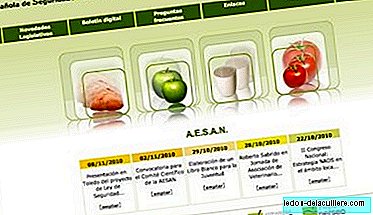
Since 2007, half a million children have joined the child poverty risk condition in Spain, a report from the Educo Foundation (formerly Intervida) tells us, in its report on the situation of children in Spain. The document shows the regression of rights associated with the risk of poverty and social exclusion, as well as the loss of well-being.
The phenomenon of child poverty is observed from three key factors to understand it: characteristics of the home, parental employment status, and effectiveness of government interventions
Human rights and, in this case, the rights of the child, are related to each other, and poverty influences many of them, so it would be necessary to prioritize those economic, social and cultural that favor the exit of the situation of social exclusion and poverty and thus advance in the development of capacities. The evidence shows that some consequences of child poverty are irreversible, so the only way to avoid them is through preventive policies and not only palliative. Although for immediate purposes, these policies may require more investment, several investigations show the mediate effect of progressive reduction of social spending and also economic returns in the medium and long term.
It is not at all simple to formulate and design preventive policies designed for the medium and long term in a context of crisis like the one in Spain today. It is a political issue, spending priorities, new and old social debts, as well as visions about desirable development and attainable possibilities.
More children in poverty since the crisis began
Of 24% of Europeans at risk of poverty, more than 25 million are children (specifically, 25,712,000 according to Eurostat 2011 data). In most EU countries children are at greater risk of poverty than adults, and this situation has not improved compared to the year 2000. Although social policy is the responsibility of each Member State, in 2007 the Union tried to establish a common reference point to monitor child poverty in order to understand the determinants of the phenomenon and combat it. These aspects were collected in the Child poverty and well-being in the EU: Current status and way forward.
Efforts to combat child poverty at European level have raised awareness of the phenomenon and placed their combat in a prominent position on national agendas
The increase in the poverty rate is significantly higher for children than for the total population, since only between 2009 and 2010 we pass from a rate of 26.2% to 30% risk for children, when it only varies by two percentage points for the total population.
Since the economic and financial crisis began in 2007, there are 457,000 more children at risk of poverty in Spain, reaching over two and a half million in 2011 according to Eurostat data. This upward trend of children at risk of poverty in Spain highlights the vulnerability of children Facing crisis situations.
Determinants that explain child poverty
Home features: factors such as the age of the parents or their educational level are related to the risk of poverty; and family structure is also an influential variable to understand the poor of children (for example, single-parent families and the many are more vulnerable).
Parental employment status: Parental unemployment represents the greatest risk of poverty for households with children (Minujin, 2012), which is why the new poverty and social exclusion indicator used by the European Union (AROPE) measures the degree of labor intensity of the home. The ability of parents to participate in the labor market depends on the active market policies that support employment - especially those that support the insertion of mothers - and the availability and accessibility of the services that allow this support. that is, care services, child care or, failing that, the existence of minimum income for insertion.
Government interventions: In Europe the richest countries (measured according to GDP / capita) devote more resources to social protection than the poorest countries. But dedicating more budget does not always mean that the risk of poverty is reduced or the level of household welfare is improved. Eurostat data shows that countries with similar levels in social spending show large differences in the effectiveness of this spending to reduce child poverty. Therefore, it is interesting to observe the investigations that measure the impact of social transfers taking into account the situation of households before and after receiving them.
Poverty, child hunger and impact on studies
One of the most controversial issues in recent months is the coverage of dining scholarships, which have come with very small budgets, although there are children who depend on the school to have a decent meal daily. During the summer holidays, we have witnessed how these facilities remained open to feed the little ones.
Several studies show that Children living in poverty have worse school results and this has a negative impact on their future opportunities. One of them, conducted in the United Kingdom to estimate the cost of child poverty (Hirsch, 2008), observes that the educational disadvantage begins early given that poor children under three are six months behind in cognitive skills than rest. In addition, the distance between poor children and the rest continues to grow as the school stages progress.
According to the same study, The educational achievements of children are affected by a number of factors such as family stress, the educational level of the home and the degree of participation in extracurricular activities. And in all cases, low family income contributes to the fact that the combination of factors is not positive. Here is a first relationship between poverty and education.
The second relationship already demonstrated broadly refers to the opportunities that education offers in equal opportunities to break the intergenerational cycle of poverty and promote the social lift
Although education is not the only determinant of upward social mobility, it does emerge as a key factor in reducing poverty in adults. Both early education (0 to 6 years) and the prevention of early school leaving (in adolescents) they have proven effective measures to reduce poverty in adult life.
The Educo Scholarships
We have seen on TV the announcement of Educo's action that with the Dining Scholarship project they want Spanish boys and girls to have the opportunity to receive something as basic as a full meal a day. They collaborate with a minimum of 50% of the cost of a daily meal in the dining room, and act through the schools. Do you know the initiative?
At the beginning of the 21st century Spain dragged two million poor children, now the number has increased: this loss of well-being and the increased risk of child poverty, from a rights perspective, they cannot be considered social problems but a violation of rights that states have the obligation to remedy.












